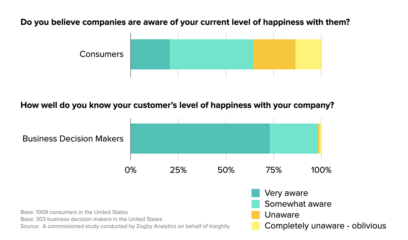The following should not be news to you, but it’s sometimes easy to forget: Patients aren’t just lines in a spreadsheet, records in a CRM system, or the list of ailments in their medical records. They are people. And while lots of healthcare companies are talking about “humanizing the healthcare experience,” I get the feeling that they’re not always crystal clear on what that means.
To develop meaningful relationships and improve medical outcomes, health service providers need to connect with their patients. Specifically, they need to touch them at three key body parts. (Don’t worry. This doesn’t require a physical exam, and it won’t be awkward at all.)
Hands. With four long fingers and nifty opposable thumbs, our hands help us do things. As healthcare consumers, we all have things that we’re trying to do when we visit a particular provider — like fixing a chipped tooth, filling a prescription, or filing an insurance claim. Healthcare companies help us accomplish these goals (or perhaps you prefer to call them “tasks” or “jobs to be done”) by developing useful services and getting them into our hands.
Wearable body monitors represent a major advancement in this area. Up until recently, we’ve had limited ability to continuously monitor what’s happening in our bodies. In 2004, I worked for BodyMedia, the maker of one of the first wearable body monitors on the market. Today, a host of companies like Jawbone (which acquired BodyMedia last year), Nike, and Fitbit market wearable devices that track everything from miles walked and calories burned to the quantity and quality of a person’s sleep.
To make health-related wearables a reality, companies have had to overcome significant technical challenges like shrinking sensors and extending battery life. But of course, the real challenge now comes in developing useful services that will allow us to improve our health by taking full advantage of our quantified selves.
Heads. The head is the seat of our cognitive faculties and information processing functions like perception, recognition, and memory recall. It’s our heads that help us navigate health insurance websites and fill out intake forms at the doctor’s office. These experiences shouldn’t make our heads hurt. Healthcare providers should aim to make every single patient (and payer) interaction as easy as possible.
Josh Kushner, founder of venture capital firm Thrive Capital, shared his frustration with the health insurance space during an interview on CNBC’s Squawk Box, a U.S. cable news program. “I opened my insurance bill one day and I realized that I had absolutely no idea what it meant. I’m educated, I run a growing business, and I didn’t know what my benefits were with doctors or hospitals I had in my network, how to file a claim…” Being the young entrepreneur that he is, Josh decided to create a new type of health insurance company — from scratch. His goal was to “make it simple, transparent, understandable, and relatable primarily through technology, data, and design.”
The result is Oscar, a New York City-based startup with more than 40,000 physicians in its network. The Oscar website includes a robust provider search that includes physician fees and patient reviews; an online quoting tool that enables prospective customers to fill in their marital status, number of kids, income, and zip code in a quick and easy Mad Libs format; a Facebook-like timeline of the subscriber’s medical history; and, of course, clear billing information that’s aggregated per visit.
Hearts. The heart is our metaphorical emotional core. And although we might try to deny this, it’s impossible to disconnect our functional needs from our emotional ones. This is obvious when we’re looking at a patient who’s going through chemotherapy or a woman who’s giving birth to her first son — but it’s equally true when we’re just trying to eat a healthy take-out meal or join a gym. And don’t forget that we bring our emotions with us when we go to work, so business-to-business healthcare companies aren’t off the hook in this area!
Medical providers need to understand their customers’ underlying emotional drivers — both on the aggregate and individual levels — and make sure that the patient experience is aligned appropriately. To help children’s medical imaging go from “terrifying to terrific,” GE Healthcare created its Adventure Series, a set of decals that turns CT scanners, MRI machines, and entire imaging rooms into a pirate ships, jungles, and coral reefs. Similarly, my own dentist in San Francisco has placed flat screen monitors on the ceiling and plays comedy shows during exams to help patients of all ages refocus their attention and reduce their anxiety about their dental procedures.
Kerry’s Take
At its essence, “humanizing the healthcare experience” means remembering that patients are human — and connecting with patients’ hands, heads, and hearts is a critical step towards this goal. But the three H’s of customer anatomy are equally valuable for any service designer in any industry. So keep them with you as you’re working today and ask: Will this decision or action connect us with our customers’ hands, heads, and hearts?
***
This post originally appeared in my regular column in Touchpoint Journal, published by the Service Design Network.




